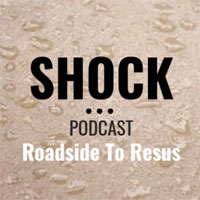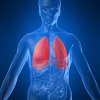Tag: shock

In Shock: My Journey from Death to Recovery and the Redemptive Power of Hope
In Shock is a riveting first-hand account from a young critical care physician, who in the passage of a moment is transfigured into a dying patient. This transposition, coincidentally timed at the end of her medical training,... read more

Less or More Hemodynamic Monitoring in Critically Ill Patients
The use of echocardiography should be initially encouraged in patients with shock to identify the type of shock and to select the most appropriate therapy. The use of more invasive hemodynamic monitoring techniques should... read more

Vasodilatory Shock in the ICU and the Role of Angiotensin II
With the approval and release of angiotensin II, a new vasoactive agent is now available to utilize in these patients. Overall, the treatment for vasodilatory shock should not be a one-size fits all approach and should be... read more

Shock: Roadside to Resus
If you're involved in the care of critically unwell patients then you will frequently encounter patients who are shocked. The European Society of Intensive Care Medicine defines shock as; "Life-threatening, generalized... read more

Cardiopulmonary Monitoring of Shock
Shock has potentially reversible causes of morbidity and mortality if appropriately diagnosed and managed. Older methods of invasive monitoring have significant limitations but are still critical for managing shock in certain... read more

Approach to the Critically Ill Child: Shock
If you mainly treat adults or both adults and children like me, then you have probably heard the (very annoying) quote, "kids are not just small adults", and so I won't say it again. Well, I guess I just did, but at least... read more

Hemodynamic Response After Rapid Sequence Induction With Ketamine in Out-of-Hospital Patients at Risk of Shock as Defined by the Shock Index
After ketamine induction, high shock index patients exhibited blunted hypertensive responses and more frequent hypotension, whereas low shock index patients had sustained increases in pulse rate and SBP. One hundred twelve... read more

The Right Tool for the Right Patient
Resuscitative TEE in the diagnosis of massive PE in the ED. We have multiple tools in the ed that allow us to assess patients rapidly. But of course, you must use the right tool for the patient. transthoracic echo (TTE) can... read more

Subsyndromal Delirium and Institutionalization Among Patients With Critical Illness
Subsyndromal delirium occurred in most critically ill patients, and its duration was an independent predictor of institutionalization. Routine monitoring of all delirium symptoms may enable detection of full and subsyndromal... read more

Outcomes in Patients with Vasodilatory Shock and RRT Treated with Intravenous Angiotensin II
Acute kidney injury (AKI) requiring renal replacement therapy in severe vasodilatory shock is associated with an unfavorable prognosis. Angiotensin II treatment may help these patients by potentially restoring renal function... read more

Enteral vs. Parenteral Early Nutrition in Ventilated Adults with Shock
In critically ill adults with shock, early isocaloric enteral nutrition did not reduce mortality or the risk of secondary infections but was associated with a greater risk of digestive complications compared with early isocaloric... read more

Microcirculatory assessment of patients under VA-ECMO
Of the 24 patients included in the study population, 15 survived and 9 died while on VA-ECMO. PVD of the sublingual microcirculation at initiation of VA-ECMO can be used to predict ICU mortality in patients with cardiogenic... read more

Angiotensin II may improve vasopressors’ efficacy
Adding angiotensin II to available vasopressor therapies correlated with significantly improved arterial pressure in patients with catecholamine-resistant vasodilatory shock and less adverse effects, according to a study... read more









